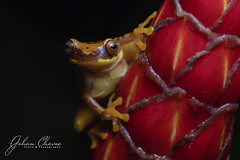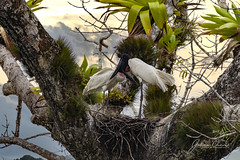Blog Archives
Birding Costa Rica. March 2023
March was quite and interesting Month. While it is considered the hottest and driest time of the year, usual weather affected the country and brought with it a lot of rain for the first 15 days of March, I thought simply the rainy season had came it 1+ month earlier that usual!! May trees flowered! May beetles emerged from the ground to mate, land crabs did their migration, all in March!!
Interestingly this intense rain stopped and went back to its normal sunny conditions; this comes to show climate change is a reality whether politicians want to see it or not.
In terms of birding, I spent most of the month leading trips locally in Esquipulas, again, the best location to go birdwatching in Manuel Antonio.
It was quite productive, each morning we would get from 85 to 112 species in a morning with many of the typical near endemic species such as Riverside wren, White-crested Coquette, turquoise Cotinga, Black-hooded Antshrike and much more. Nonetheless, this month I got to guide a short trip to friends from Dallas, Jim and Gretchen Peterson.
These birders, Jim in particular, have been coming to CR for more than 20 years now and when they come, their target list just gets tougher and tougher, i.e more fun!!
This trip took us to one of my favorite locations; Caño Negro area and Arenal Observatory lodge in La Fortuna area. We met in a Hotel near the airport and our day started bright and early with a stop at Cinchona cafe where we got a lot of the typical birds that show up here.

Crimson-collared tanager, Palm, Scarlet-rumped, Silver-throated and blue-gray Tanagers never fail to show at this feeder. With Coppery-headed Emerald and barred Hawks as the highlights here, we then went down to La Virgen del Socorro —a must do stop when heading to fortuna or la selva biological station area.
This location offers some productive road-side birding, here we got about 28 species in a about 15-20 minutes, including Ornate Hawk-eagle, Sooty-faced Finch and Green Thorntail.
Our next adventure was at Caño Negro with the one and Only! “Chambita Romero” he is a local bird guide who covers caño Negro and Medio Queso wetlands. His birding skills are second to none and knows the area like the back of his hand. Our two boat rides delivered many good birds, as typical we got Pinnated and least Bitterns, Sungreebe, Blavk-collared Hawk, Northern Harrier, Nicaraguan Grackle and Nicaraguan Seed-Finch among many many others.

Our next stop was Arenal Observatory lodge, we were quite excited as we kept looking at reports of Rufous-vented Ground-Cukoo, unfortunately, no recent records near our arrival time. However here we got Nightingale Wren, a nemesis bird to Jim, Cape May Warbler (my favorite of the trip), Golden-bellied Flycatcher, Ocellated Antbird and Ornate as well as Black Hawk-eagles!!

In Sky adventures we had a good walk that produced a bird Jim wanted to see the most: Yellow-eared Toucanet, possibly thanks to the intel shared by a fellow bird guide Anthony Arce whom I thank for always sharing knowledge of the birds around his area. Tanwy-faced Gnatwren and uniform crake (at Bogarin Trail) were special birds during our time here.

On the way back, we did a quick stop at Canopy San Luis where the trails were not productive at all but the feeders delivered as usual some good birds.
A very nice trip full of great memories and thought birds for Gretchen and Jim. I am now looking forward to our next outing in October.

Birding in Costa Rica January 2023.
2023 has been so far a good year. I had been leading a few birding trips away from Manuel Antonio that had kept me quite busy.
Locally speaking I led morning outings in Esquipulas, this is the best birding in Manuel Antonio. Not only is the typical road to Esquipulas excellent but also the new-ish place called Esquipulas rainforest Lodge was excellent, their feeders were full of birds and some which are targets to many birders and photographers such as Fiery-billed Aracari, Golden-naped Woodpecker and Spot-crowned Euphonia and much more were seen at the fruit feeders, while iconic species such as White-crested Coquette was not too regular at the Lantanas.

The short trail at Esquipulas Rainforest lodge produced several good birds for my clients during January, Red-capped, Orange-collared and Velvety (former Blue-crowned) Manakins as well as White-tipped Sicklebill was regularly seen on January but interestingly did not do to good with Turquoise cotinga during the month. Both Esquipulas RFL and the typical road where I bird was fantastic during the month of January (beginning of the dry season).
On early-mid January I had the chance to guide a client who I know, Richard Smith, and his friend Roger Murray, both form Northern Ireland around various location in Costa Rica, mainly on the Caribbean side of the country and Some of the highlands.
Our trip started on El Robledal hotel, a small hotel I like to use for my clients with extremely friendly staff and well located near the airport. we immediately drove up into Mirador Cinchona, a well know spot when heading into the Caribbean side of the country but first we stopped at Freddo Fresas for some targets.
Once at Cinchona café we were welcome by many birds, some iconic birds of this site such as Red-headed and Prong-billed Barbets, a pair of Crimson-collared Tanagers, and many more birds, here we got Green Thorntail and the CR only endemic Coopery-headed Emerald as well as Black-bellied Hummingbird.The road down to La Virgen Del Socorro did not disappoint, we got Rufous-browed Tyrannulet and White-fronted Tyrannulet, the first one being perhaps the best bird of the day!

Once in La Fortuna we spent 2 nights at Arenal Oasis, a small eco-lodge located near town in La Fortuna which offers good birding. We did places such as Skywalk, Bogarin Trail, the old road that led to the park via the Peninsula.
Birding in La Fortuna area was great and produced a big list of birds we only saw here during this part of the trip, some nice memories include Black-bellied Wren, Uniform and White-throated Crakes, Harris’ Hawk, White-and-white Owl, Dull-mantled Antbird, Golden-crowned Warbler, Blue-and-gold Tanager and so many more! We felt lucky with the weather as it only rained one morning during our time there.

The next part of our trip would take us to Caño Negro where we would meet with the one and only, Chambita Romero (Barnaby Romero), a great local boat man and bird guide in the area. Both boat tours we did with him in Caño Negro and then Medio QUeso were very productive and perhaps the favorite days for Richard and Roger. Sungrebes, various Kingfishers, Snail Kite, Black-collared Hawk, Pacific Screech owl, Common and Great Potoos and Agami heron were among the many favorites.
In terms of accomodations there is ot much to choose from here, so I just use a convenient hotel in Los Chiles called CyC, new with nice fully A/C rooms, good option so we could be ready early in the morning for the Medio Queso boat ride.
If you are birding in Caño Negro Chambita is the man to get, his contact is +506-8412-3269.

Up next on our trip was the amazing La Selva biological station, this has got to be one of my favorites sites in Costa Rica. This is one of the three research stations run by the Organization for tropical Studies (OTS) in Costa Rica. Although weather was not precisely in our favor as CR was experiencing a cold front which brought lots of intermittent rains, we managed to use our plan B (love plan b!) and spend one morning at Pierella´s garden, a fantastic place for photographer but for us we our alternative to shelter from the rain while still getting some birds, here we saw American Pygmy-kingfisher, Chestut-colored, Cinnamon and Golden-olive Woodpeckers! Rufous-tailed Jacamar and much more! Highlights in La Sleva include Ocellated and Spotted Antbirds as well as Purple-throated Fruitcrows and Black-capped Pygmy Tyrannt.


We could not leave here without spending time with the famous Cope (José Perez) who is a must while photography or birding in CR. His jungle walk delivers a good experience and this time we got Spectacled and Crested Owls!
After some rainy days on the Caribbean side it was time to see the sunshine, and San Gerardo de Dota was our destination. We spent time in Paraiso Quetzal seeing the Hummingbirds there at their feeders and got other nice birds such as Black and yellow Silky-Flycatcher and Long-tailed Sily-Flycatchers. Quetzals were seen soonest we arrived to San Gerardo and we spend some of our time there exploring the waterfall trails as well as the Hotel grounds (Sueños Del Bosque). Thanks

San Gerardo is one of the regions that produce a good number of regional species which we share with Panama, definitely worth to spend 2 nights here, good for birders and photographers alike.
Our last stop, would be Carara, and here we only spend 1 night so we could explore Carara and Tarcoles area. This hot to humid region is always good for many species found on the central-south Pacific region. We got Olive Sparrow, Yellow-naped Parrot, Streak-backed Oriole, Scrub Euphonia, Cinnamon Hummingbird, Mangrove Vireo and much more. We did miss the chance to see Cedar Waxwings that Patrick O’Donnell had told us about, but funny enough, Richard and Roger got them at El Robledal hotel while drinking a beer by the pool of the hotel before their flight out! Lucky them!

— For context: Cedar Waxwings are interruptive migrants, showing down here every once in a while, a highlight to us Costa Rican birders, 2023 had been a great year for this species and showed up in many locations in CR. I got my second sighting of this species while guiding near Carara area on late January. —
What a fabulous trip this was, we all got great experiences and enjoyed seeing many birds, but most importantly creating experiences that we will always remember
Back in Manuel Antonio, I spent the rest of the month leading some local birding outing that kept me away from the incredibly busy Manuel Antonio National park, these trips included one day trips to Esquipulas, Carara as well as 2 trips to San Gerardo de Dota to photograph highland birds and the iconic Resplendent Quetzal.


Overall January was packed with birds, return costumers and new ones, clients who became friends and share a passion whether it is birding or photographing wildlife. Do I have a favorite bird for January? That would probably be the Cedar Waxwings!







